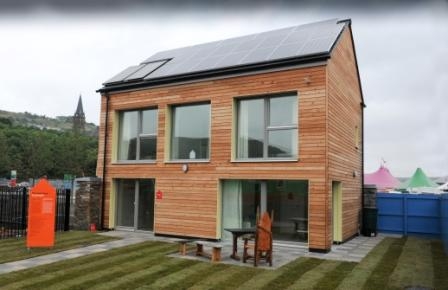Ebbw Vale
Two pilot Passivhaus dwellings were constructed in Ebbw Vale, South Wales for the 'Welsh Future Homes' exhibit. Each adopted a very different design approach to delivering the standard. The Larch house featured very large south-facing windows in order to optimise solar gains in winter, with much smaller windows on the north side. Mechanical external blinds were also installed to help reduce the risk of summer overheating. By contrast, the Lime house featured relatively small windows throughout the building – much more in keeping with local trends – in order to help reduce the peak heating load during winter but also reduce the risk of summer overheating. The window sizes had a significant influence on the cost of the building, while both ultimately comply with the Passivhaus Standard. Hence, depending on the regional climate conditions, it may be more viable to reduce window sizes in order to make construction costs more acceptable.
Further information is available via the architect for the scheme:
www.bere.co.uk/projects/lime-house-passivhaus
Both dwellings used solar hot water systems to supplement the heating and hot water provision in the homes. The remainder of the regulated energy demand was then met using PV, (with additional capacity (up to 140% of regulated demand) supplied in one of the houses), making them effectively zero CO2 homes. [Larch house: 4.7kWp installed PV, 4m2 solar thermal collector. Lime house: 1.89kWp installed PV, 3.3m2 solar thermal collector.] The PV will receive the Feed in Tariff for electricity produced, so the systems will pay for themselves sooner than if just offering offset electricity usage.
Client: United Welsh Housing Association
Architect: bere:architects
Contractor: Pendragon Design & Build Ltd
Passivhaus Consultants: BRE
Timber frame supplier: Holbrook Timber Frame Ltd
